Somali pirates are back and even cooler. Where have they been for 12 years? (14 photos)
Remember the 2010s, the very beginning? Back then, the news was full of headlines about supertanker hijackings somewhere off the coast of Africa. Somali pirates terrorized the Indian Ocean, like the days of Jack Sparrow, only with Kalashnikovs instead of cutlasses. 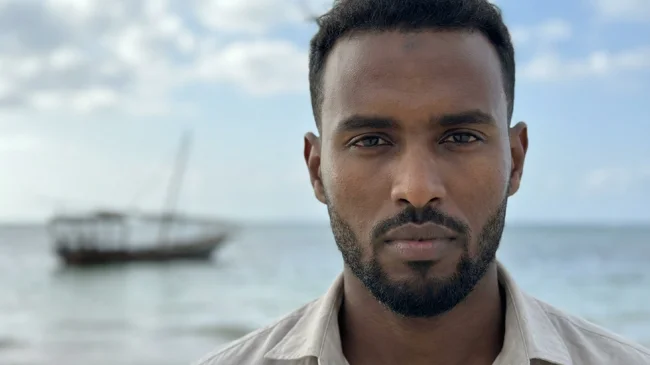
And then, suddenly, silence. For over a decade, almost no one heard about them.
Problem solved? Civilization has defeated the sea robbers?
Not really. Somalia's pirates have returned in the past year. And they've done so on a scale that has forced shipping companies to once again dig out their anti-piracy manuals. They're back, armed with new technology and have found partners among their neighbors.
The number of attacks has increased by 110% in a year. So where did they go for an entire decade? And why are they back now?
Of course, Somalia's history reads more like an organized crime thriller than a romantic pirate tale. It's got it all: state collapse, billion-dollar ransoms, international military operations, and even floating stations—a new pirate tactic. We explore how these 21st-century maritime robbers managed to disappear and then rise again.
When fishermen took up machine guns 
This story has its roots in 1991, when Somalia's central government collapsed like a house of cards. The country plunged into civil war, and 3,330 kilometers of coastline were left completely unprotected.
Imagine: you have no police, no army, no coast guard at home. But you have a sea full of fish—the only source of income for tens of thousands of families.
And then huge trawlers from Spain, Iran, Yemen, and even distant Taiwan began entering these waters. They fished on an industrial scale. Moreover, some are detonating dynamite right in the water to stun the schools. Local fishermen are watching their only income literally evaporate before their eyes. 
The figures are simply devastating: illegal fishing off the coast of Somalia was estimated at $900 million annually.
One of the Somali leaders said bluntly at the time: "They took our food and our lives."
What should the locals do? At first, groups of fishermen united into "self-defense units." They approached foreign trawlers and demanded payment for a "license" to fish in Somali waters. Naturally, there were no laws, and these guys could easily have been sent packing. But more often, they were paid off. The money was very small, but the local guys would sail away and stay out of the way.
And they literally fed the pirates.
Money is a tricky thing. Someone quickly realized: why stop only fishing vessels? Tankers, container ships, and bulk carriers pass by every day. And they're much richer! 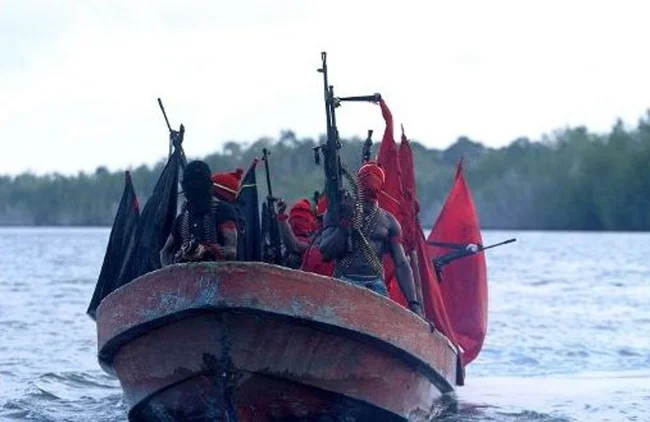
You capture such a vessel, hold the crew hostage, and the owners are willing to pay a ransom tens of times greater than the entire annual fish catch.
By 2005, these "noble defenders of their own shores" had transformed into full-fledged criminal groups, with a business model that any venture capitalist would envy.
How the Pirate Business Worked
The images of lone bandits on rickety boats are a thing of the past. By the late 2000s, piracy off the coast of Somalia had become a veritable industry with a complex structure and serious money.
Here's how it worked. Local clans acted as investors – they provided money to organize raids. Militants were hired, speedboats, machine guns, and grenade launchers were purchased. "Mother ships" – usually captured fishing vessels – were used. Small speedboats would launch attacks from these ships. 
The pirates had satellite phones, GPS navigators, and other modern equipment to track potential victims and communicate with each other. They established financial intermediaries in Dubai to negotiate ransoms.
The peak occurred in 2011: 212 attacks in one year. Their own shores were no longer enough. The pirates seized ships up to a thousand nautical miles from shore.
They operated in the Gulf of Aden, the Red Sea, and the open Indian Ocean. The geography of their operations was impressive.
How much did a real pirate earn?
By its peak, Somali piracy had evolved into a rigid corporate structure with a clear profit hierarchy. Ransoms for hijacked vessels could reach $5.5 million—a staggering sum for one of the world's poorest countries. But this money was distributed according to a strict system, with the lion's share going to far from those risking their lives on the high seas. 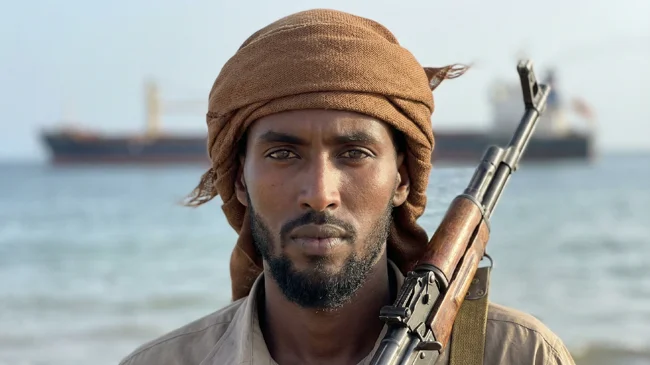
Half of the ransom went to the investors who financed the raids. These were local mafiosi and members of the political elite, who purchased weapons, boats, and supplies. Another 10% went to support personnel on shore: translators who negotiated with shipowners, cooks, supply men, and security guards.
10% was allocated for "social expenses"—gifts and bribes to the local community to keep residents of coastal towns averting their eyes (let's not forget our people in Dubai). 
The remaining 30% was divided among the actual pirates—those who went to sea and captured ships. They still had plenty left over, so there was no shortage of new fighters.
Pirates have a class system. Class B pirates—land-based fighters who guarded the captured vessel in port—received a fixed salary of around $15,000. For Somalia, where the average annual income is several hundred dollars a month, this is a huge sum. Class A pirates, the daring ones who attacked ships on the high seas, received a larger share. Those who brought their own weapons, provided a speedboat, or were the first to board an attacked vessel were especially prized—they received additional bonuses. Such pirates could earn an average of up to $100,000 a year. 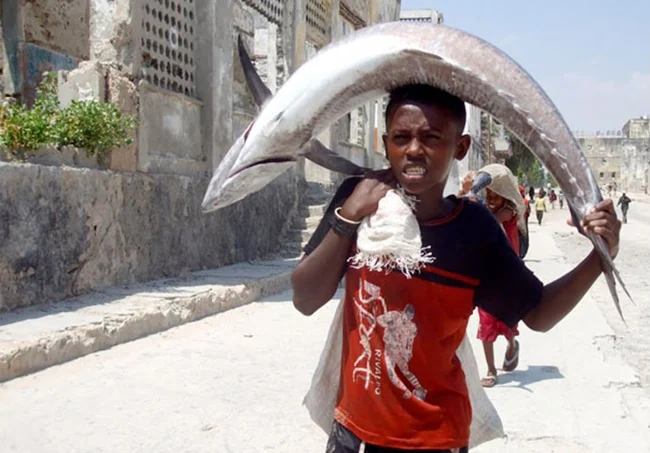
Satellite images of coastal towns showed a construction boom: new homes, roads, expensive cars. However, these benefits went to a select few—investors, gang leaders, and successful militants. And ordinary fishermen, the very same ones whose complaints about illegal fishing had once launched this entire machine, received, at best, meager crumbs in the form of "gifts."
The damage to the global economy was estimated at $18 billion annually.
Shipping companies lost money on ransoms, insurance, and rerouting. And the pirates themselves received over $400 million in ransoms from 2005 to 2012.
For comparison, this amount is almost half of the annual budget of all of Somalia.
The world has sounded the alarm. But how can one fight an enemy operating from a country that effectively lacks a state? You can't simply send in an army—it's sovereign territory. You can't negotiate with the government—there really isn't one. And those in the government don't control the pirates.
How the world united against pirates
The United States, China, Great Britain, and France finally reached an agreement and deployed warships to the region. A total of 18 countries participated in anti-piracy patrols. 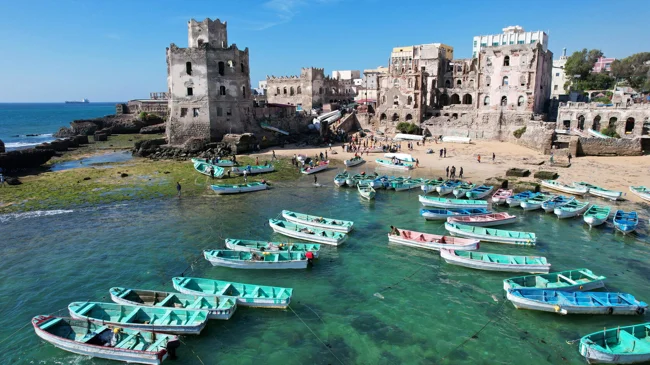
The European Union launched Operation Atalanta. Warships escorted merchant ships through dangerous waters. Special security corridors were created, through which convoys passed under guard.
The ships were accompanied by heavily armed security. Private military companies began deploying soldiers with automatic weapons on board the ships. The cost of the security was less than the potential ransom. For pirates on speedboats, encountering professional marksmen on the upper deck was a very unpleasant surprise.
The effect was immediate. While there were 212 attacks in 2011, there were only 10 in 2012.
And between 2013 and 2023, only two ships were successfully captured. 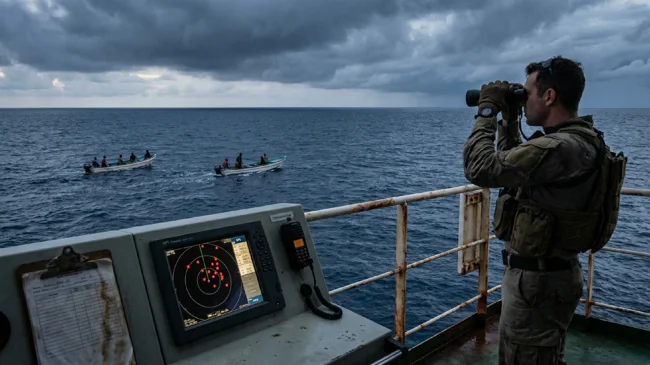
Piracy became unprofitable. The probability of success dropped to almost zero, and the risk of being killed or captured increased sharply. Local clans stopped investing in raids – why invest in a failing business? Young Somalis who had once dreamed of easy money at sea had switched to other pursuits.
The world breathed a sigh of relief. The problem was solved. The pirates had vanished into thin air, as if they had never existed. 
But they forgot the main thing: they had addressed the symptom, but not the root cause of piracy. Somalia remained a ruined country. Vessels from other countries continued to illegally fish here, depriving poor Somalis of their only clear source of income.
Meanwhile, military patrols weakened over time – why maintain costly operations if there are no pirates?
They returned
The pirates are back. And they're not just back, they're back with new technology and tactics. 
Modern Somali pirates use captured dhows as floating bases. This allows them to operate 300-600 nautical miles from shore. They have satellite phones, GPS, grenade launchers, and automatic weapons. Some groups use drones for reconnaissance.
The new generation of pirates is more brutal, and there are cases of hostage abuse.
Why are pirates back now?
Four Reasons for the Resurgence of Piracy
First, the diversion of naval forces. When Yemen's Houthis began attacking vessels in the Red Sea, international warships were redeployed there. Anti-piracy patrols off Somalia were sharply reduced. The pirates noticed this and took advantage of the opportunity. 
The second reason, and I've already mentioned it, is that illegal fishing hasn't gone away. Foreign trawlers continue to ravage Somali waters. Local fishermen are once again losing their income. History is repeating itself: young people have decided it's better to intercept merchant ships than to starve.
Political instability. The government in Mogadishu distributes fishing licenses, but the money doesn't reach local communities. Corruption is rampant. Regional authorities are losing legitimacy in the eyes of the population.
Finally, the pirates have acquired new allies. Evidence has emerged of pirate ties to the terrorist group Al-Shabab and even the Yemeni Houthis. These are no longer just criminal groups, but part of a more complex network with a political agenda. 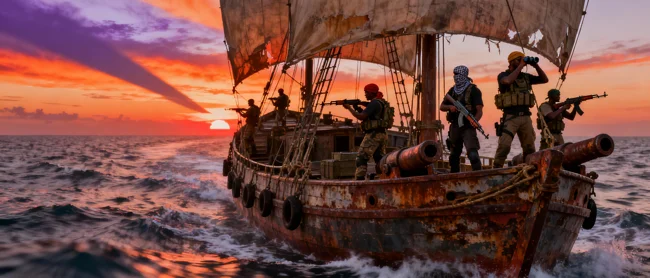
Researchers are blunt: unless serious measures are taken, we will see a new peak in piracy in a few years.
Maritime security experts are now sounding the alarm: military patrols must be urgently reinstated in the region. We need to sever pirates' ties with terrorist groups—otherwise, the problem could become much worse than it is now.
And most importantly, we need to stop the foreign fleets that are plundering Somali waters. If local youth have proper jobs at sea, they won't go robbing tankers.
The pirates haven't gone away. They've simply been biding their time. And it looks like that time has come again.























